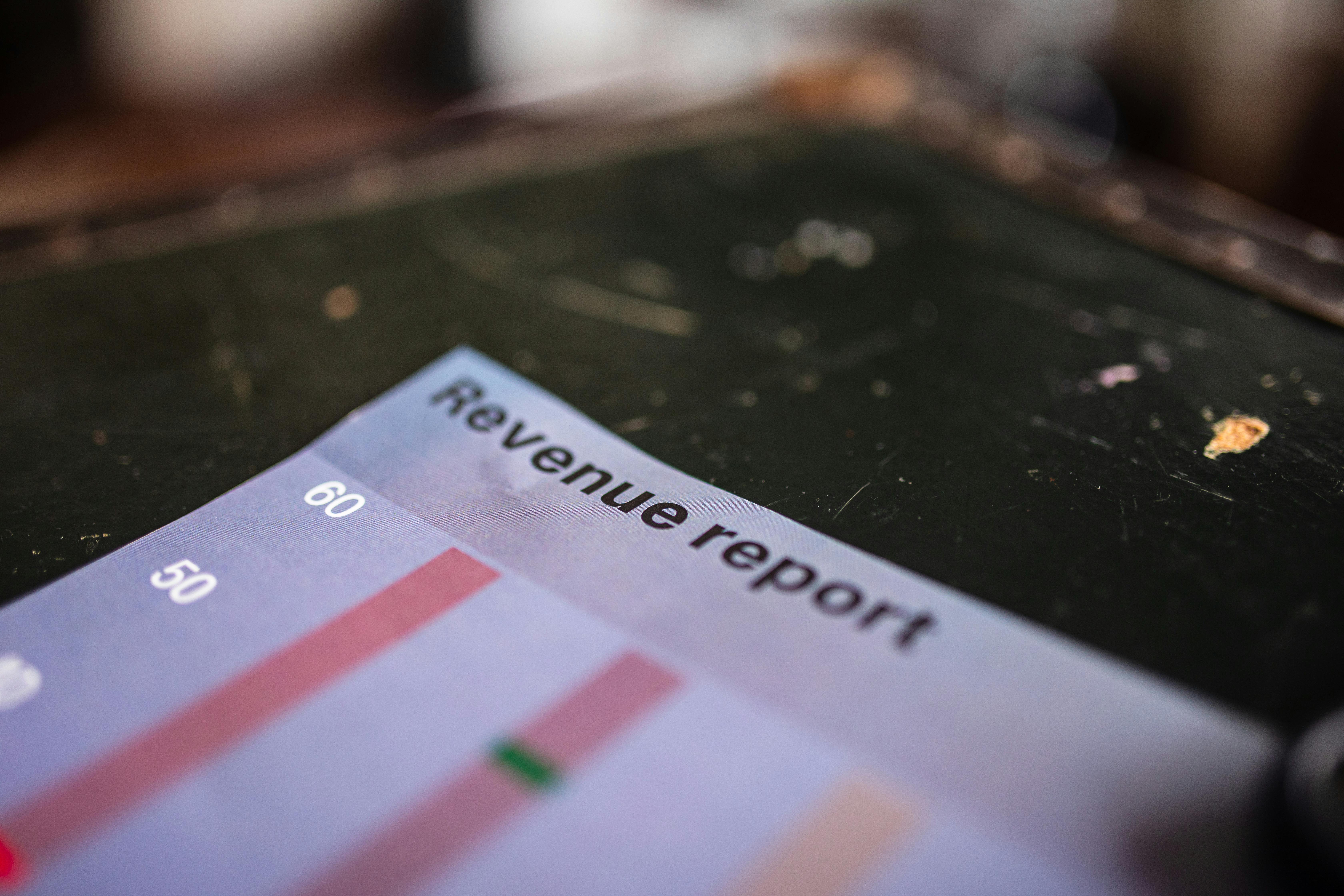In the competitive world of digital marketing, understanding the ROI of backlink building is crucial for businesses aiming to enhance their online presence. If you’ve ever wondered how to measure the success of your backlink strategy, you’re not alone. Many marketers struggle to quantify the impact of backlinks on website traffic and overall revenue. This comprehensive guide will unlock the secrets to successful backlink building and help you discover essential success metrics that can transform your digital marketing efforts.
Backlinks are more than just hyperlinks; they are powerful endorsements from other websites that can significantly boost your site’s authority and search engine rankings. But how do you really measure the effectiveness of your backlinks? In this article, we will explore key performance indicators (KPIs) and tools that can help you evaluate the impact of backlinks on your site’s performance. Are you ready to dive deep into the world of backlink analytics and uncover the metrics that truly matter?
By the end of this guide, you’ll have a clear understanding of how to track and measure the ROI of your backlink building efforts. We’ll cover everything from organic traffic growth to conversion rates, ensuring you have the insights needed to optimize your strategy. So, let’s embark on this journey to uncover the true potential of backlinks and learn how to leverage them for maximum success! Get ready to elevate your digital marketing game and discover the transformative power of effective backlink building.
Top 5 Key Metrics to Measure the Success of Your Backlink Building Strategy

In the world of digital marketing, backlink building is crucial for enhancing your website’s authority and search engine rankings. But how do you know if your efforts are paying off? To truly unlock the ROI of backlink building, you need to focus on key metrics that can help you measure success. Understanding these metrics will allow you to evaluate the effectiveness of your strategy and make informed decisions moving forward. So, let’s dive into the top 5 key metrics to measure the success of your backlink building strategy.
1. Domain Authority (DA)
One of the most widely used metrics in SEO is the Domain Authority. Developed by Moz, this score predicts how well a website will rank on search engine result pages (SERPs). It ranges from 1 to 100, with higher scores indicating a greater ability to rank. When you’re building backlinks, you want to target websites with high DA scores because they can pass on valuable link equity to your site.
- DA is calculated based on:
- The number of total backlinks.
- The quality of links pointing to the domain.
- The overall trustworthiness of the domain.
You can monitor your DA over time to see if it increases as you build more backlinks. If your DA is rising, it indicates a successful backlink strategy, while a stagnating or decreasing DA might suggest a need for improvement.
2. Referral Traffic
Referral traffic is another important metric to consider. This measures the number of visitors that come to your site from other websites through backlinks. A successful backlink should not just improve your SEO but also drive actual traffic to your site.
To track referral traffic, you can use tools like Google Analytics. Here’s how:
- Go to the “Acquisition” section.
- Click on “All Traffic” and then “Referrals.”
- Analyze the data to see which backlinks are sending you the most traffic.
If certain backlinks are generating significant referral traffic, it might be worth focusing on similar strategies in the future.
3. Conversion Rate
While getting traffic is great, what matters most is how many of those visitors convert into leads or customers. The conversion rate tells you the percentage of visitors that take a desired action on your site, like making a purchase or signing up for a newsletter.
To calculate conversion rate, use this formula:
Conversion Rate = (Conversions / Total Visitors) x 100
Keep track of the conversion rates of users who come through backlinks. If your conversion rate is low despite high traffic, it may mean that the backlinks are not as relevant to your audience as you thought.
4. Anchor Text Diversity
Anchor text refers to the clickable text in a hyperlink, and diversity in anchor text is vital for SEO. Search engines like Google value natural variations in anchor text rather than repetitive phrases. A diversified anchor text profile can enhance credibility and help your site rank for various keywords.
When analyzing your backlinks, check the variety of anchor texts being used:
- Brand name (e.g., “CompanyName”)
- Exact match (e.g., “best digital marketing services”)
- Partial match (e.g., “services for digital marketing”)
- Generic (e.g., “click here”)
If you notice that many backlinks use the same anchor text, it could raise red flags for search engines. Aim for a balanced mix that reflects your content’s themes and topics.
5. Backlink Quality
Not all backlinks are created equal. Evaluating the quality of your backlinks is essential. High-quality backlinks come from authoritative, relevant websites and are more beneficial than numerous low-quality links.
To assess backlink quality, consider:
- The authority of the linking domain (use metrics like DA).
- The relevance of the linking site to your niche.
- The context in which the link is placed (editorial, footer, etc.).
A good backlink strategy focuses on acquiring high-quality links rather than just increasing the quantity.
By regularly monitoring these key metrics, you can better understand the ROI of your backlink building efforts. This not only helps in measuring success but also guiding your future strategies.
In summary, measuring the success of your backlink building strategy is crucial for improving your website’s performance. By focusing on Domain Authority, referral traffic, conversion rate, anchor text diversity, and backlink quality, you can gain valuable insights into how well your efforts are working. Remember, the goal is not just to build links but to build meaningful connections that enhance your site’s authority and visibility. With the right approach, you can successfully unlock the ROI of your backlink building initiatives.
Unlocking the Secrets: How Quality Backlinks Drive Traffic and Boost Conversions

In the ever-changing landscape of digital marketing, understanding the role of backlinks is crucial for anyone looking to elevate their website’s performance. Backlinks, or inbound links, are links from other websites that point to your site. They play a significant role in search engine optimization (SEO) and can unlock a treasure trove of traffic and conversions when utilized effectively. So, let’s dive deep into the secrets of how quality backlinks can drive traffic and boost conversions, while also exploring how to measure the ROI of backlink building.
What Makes Backlinks So Important?
Backlinks are like votes of confidence from other websites. When a reputable site links to yours, it signals to search engines like Google that your content is valuable. This can improve your site’s authority, leading to higher rankings in search results. Here are some key points to consider:
- Increased Visibility: Quality backlinks can help your site rank higher on search engines, making it easier for potential customers to find you.
- Referral Traffic: High-quality backlinks can drive traffic directly from the linking site, bringing in users who are already interested in your niche.
- Brand Authority: Being linked by respected sites enhances your brand’s credibility and authority.
Unlock The ROI of Backlink Building: Discover Success Metrics
Measuring the effectiveness of your backlink strategy is essential to understanding its return on investment (ROI). Here are some metrics to evaluate:
- Domain Authority (DA): A score from 1 to 100 that predicts how well a website will rank on search engines. Higher DA often means better chances of acquiring quality backlinks.
- Referral Traffic: Use tools like Google Analytics to track the amount of traffic coming from backlinks. A significant increase could indicate effective backlinking.
- Conversion Rate: Monitor how many visitors from backlinks complete desired actions, like signing up or making a purchase.
Types of Backlinks to Consider
Not all backlinks are created equal. Quality matters more than quantity. Here’s a breakdown of different types of backlinks:
- Editorial Backlinks: These are links included naturally in a piece of content. They’re the most valuable because they come from high-quality sites that think your content is worth linking to.
- Guest Blogging Links: When you write an article for another website, you can include a link back to your own site. This can build relationships and drive traffic.
- Business Profile Links: Registering your business on directories can also provide backlinks, although these links tend to be lower in quality.
- Social Media Links: Sharing your content on social media can generate traffic, although these links are often nofollow and may not pass authority.
Building Quality Backlinks: Strategies That Work
To maximize your backlink building efforts, consider these strategies:
- Create High-Quality Content: This is the foundation of any successful backlink strategy. When your content is valuable and informative, others are more likely to link to it.
- Reach Out to Influencers: Connect with influencers in your niche and ask them to share your content. A simple email could lead to a valuable backlink.
- Participate in Online Communities: Engage in forums and discussion boards. Providing helpful answers can lead to natural backlinks.
- Leverage Broken Link Building: Find broken links on reputable sites and suggest your content as a replacement. This method can be highly effective.
Practical Example: Measuring Success
Let’s say you launched a new blog post and implemented a backlink strategy. You could measure success by:
- Checking how many backlinks were acquired within the first month.
- Analyzing referral traffic in Google Analytics to see if traffic increased.
- Evaluating if there was a spike in conversions from visitors who came via backlinks.
If you see a significant uptick in traffic and conversions, it’s a good sign that your backlink strategy is working. However, if not, then adjustments may need to be made.
The Importance of Monitoring and Adjusting Your Strategy
It’s not enough to just build backlinks; you have to continuously monitor their impact. Tools like Ahrefs and SEMrush can help track your backlinks and their performance. Regularly review your backlink profile to ensure you’re not linking to low-quality sites, which can harm your SEO.
By understanding the role of quality backlinks and how to measure their effectiveness, businesses in New York and beyond can unlock a new level of digital marketing success. High-quality backlinks not only drive traffic but also significantly enhance conversion rates. The digital world is dynamic, so staying informed and adapting your strategies is key to ongoing success in SEO and digital marketing.
The Ultimate Backlink ROI Calculator: How to Quantify Your Link-Building Success

Backlinks are an essential part of digital marketing and search engine optimization (SEO), helping websites achieve higher rankings on search engine result pages. But, how do you know the actual value of your link-building efforts? That’s where The Ultimate Backlink ROI Calculator comes into play. With this tool, you can quantify your link-building success, unlocking the true ROI of backlink building through measurable success metrics.
Understanding Backlink ROI
Backlink ROI (Return on Investment) is a way to measure how effective your link-building strategies are. It’s not just about how many backlinks you acquire, but also about how those links contribute to your overall business goals. Factors like increased website traffic, improved SERP rankings, and ultimately, higher conversion rates are what you should be looking at.
To get started, it’s important to identify the metrics that matter most to your business. Here are some key factors to consider:
- Domain Authority (DA): A score that predicts how well a website will rank on SERPs. The higher the score, the more valuable the link.
- Referral Traffic: The number of visitors coming to your site from a backlink. This can be tracked using tools like Google Analytics.
- Conversion Rate: A percentage that tells you how many visitors complete a desired action (like making a purchase) after clicking on your link.
- Keyword Rankings: Tracking how your targeted keywords are performing post-link building efforts.
The Ultimate Backlink ROI Calculator
Creating a Backlink ROI Calculator can help you streamline the process of measuring your link-building success. Here’s a simple formula you can use:
- Identify Your Investment: This includes costs for tools, content creation, and outreach efforts.
- Calculate Your Benefits: This can be done by estimating the revenue generated from the traffic driven by backlinks.
- Use the Formula: Backlink ROI = (Benefits – Investment) / Investment * 100.
For example, if you spent $1,000 on link building and earned $5,000 in revenue from it, your ROI would be calculated as follows:
- Benefits: $5,000
- Investment: $1,000
- Backlink ROI = ($5,000 – $1,000) / $1,000 * 100 = 400%
This means you earned a 400% return on your investment, which is quite impressive!
Success Metrics to Measure Your Link-Building Efforts
To truly understand the ROI of backlink building, you need to track various success metrics. Here’s a breakdown of some of the most important ones:
- Traffic Increase: Track the amount of traffic to your site before and after acquiring backlinks.
- Keyword Visibility: Observe changes in your keyword rankings, especially for those that are directly associated with your backlinks.
- Engagement Metrics: Analyze bounce rates, time spent on page, and pages per session to see if the new traffic is engaging with your content.
- Lead Generation: If your goal is to generate leads, keep track of how many leads resulted from the traffic coming from backlinks.
Practical Examples of Backlink Building Success
Let’s take a look at a couple of examples to illustrate how businesses have successfully measured their backlink ROI:
E-commerce Store:
- Investment: Spent $2,000 on link building.
- Results: Received 15,000 visitors from referral traffic, resulting in 300 orders worth $15,000.
- ROI Calculation: (($15,000 – $2,000) / $2,000) * 100 = 650% ROI.
Blogging Website:
- Investment: $1,500 for guest posts and outreach.
- Results: Increased traffic by 10,000 visitors, generating $3,000 in ad revenue.
- ROI Calculation: (($3,000 – $1,500) / $1,500) * 100 = 100% ROI.
Tools to Help You Calculate Backlink ROI
There are several tools available that can assist you in tracking and measuring your backlink ROI, including:
- Google Analytics: Perfect for monitoring traffic and conversions.
- Ahrefs: Great for analyzing backlink profiles and tracking keyword performance.
- SEMrush: Offers comprehensive tools for measuring and monitoring all aspects of your link-building efforts.
To summarize, utilizing The Ultimate Backlink ROI Calculator can greatly enhance your understanding of link-building success. By focusing on key metrics and employing effective tracking tools, you can uncover the true value of your backlinks. Don’t overlook the importance of continuous evaluation and adjustment of your strategies. In the fast-evolving world of digital marketing, staying informed and adaptable is essential for achieving long-term success.
Case Studies: Real-Life Examples of Successful Backlink Strategies and Their Impact on ROI

In the competitive world of digital marketing and SEO, understanding the value of backlinks is crucial. Businesses in New York and beyond have been leveraging backlink strategies for years, and case studies show how successful these tactics can be. Backlinks, or inbound links from other websites to yours, are a key component of SEO, influencing search engine rankings and driving organic traffic. But how do you measure the return on investment (ROI) of backlink building? Let’s dive into real-life examples, success metrics, and ways to unlock the true potential of your backlink strategies.
Case Studies: Real-Life Examples of Successful Backlink Strategies
One of the most notable case studies involves a New York-based e-commerce store that specializes in handmade jewelry. They implemented a comprehensive backlink strategy that included guest blogging, influencer partnerships, and outreach to fashion bloggers. Over six months, they managed to secure over 100 backlinks from high-authority sites. As a result, their organic traffic increased by 150%, leading to a significant boost in sales.
Another example can be found in a local restaurant in Brooklyn. They focused on creating high-quality content, like blog posts about food trends and local ingredients, which attracted attention from local food bloggers. By collaborating with these bloggers, they gained valuable backlinks. This resulted in a 200% growth in their website traffic and an increase of 40% in reservations.
These cases clearly illustrate the impact of backlinks on organic reach and revenue generation.
Unlock The ROI of Backlink Building: Discover Success Metrics
To effectively measure the ROI of your backlink strategies, it’s important to focus on key performance indicators (KPIs). Here are the most important metrics you should consider:
- Organic Traffic Growth: Measure the increase in visitors coming from search engines after obtaining backlinks.
- Conversion Rate: Track how many of these visitors take desired actions, like making a purchase or signing up for a newsletter.
- Keyword Rankings: Monitor the improvement in your website’s rankings for targeted keywords.
- Domain Authority: Evaluate changes in your website’s domain authority, which can be a good indicator of overall SEO health.
- Referral Traffic: Analyze traffic coming directly from the sites that link to you.
The ROI of Backlink Building: How to Measure Success
Now, let’s break down how you can measure the success of your backlink building efforts.
Set Clear Goals: What do you want to achieve? Whether it’s increasing traffic, improving rankings, or boosting sales, setting specific goals will help you track progress effectively.
Use Analytics Tools: Google Analytics and other SEO tools like Ahrefs or SEMrush can help you monitor traffic, conversions, and rankings. Set up tracking for the pages where backlinks are placed to see their direct impact.
Calculate Your ROI: To find the ROI of your backlink strategy, use the formula:
ROI = (Net Profit / Cost of Investment) x 100
This means you need to determine how much profit you make from traffic generated by backlinks compared to the costs involved in acquiring those links.
Regular Review: Create a schedule to review your metrics regularly. This will help you identify what’s working and what needs to be adjusted.
A/B Testing: Experiment with different types of content and backlink sources. Compare the performance of these various strategies to see which ones yield the best results.
Practical Examples of Backlink Strategies
Here’s a list of effective backlink strategies that have proven successful for various businesses:
- Guest Blogging: Write valuable articles for other websites, including a link back to your own. This not only builds backlinks but also positions you as an authority in your niche.
- Infographics: Create engaging infographics that others want to share. When they do, your link goes along with it.
- Resource Pages: Reach out to websites that curate resource lists. If your content is relevant, they may include your link.
- Testimonials and Reviews: Offer testimonials for products or services you use. Many businesses will link back to your site as a thank you.
These methods don’t just improve your link profile, they can also build relationships with other businesses.
The journey to effective backlink building is not simple, but the results can be incredibly rewarding. By understanding the metrics that matter and applying successful strategies, you can unlock the true ROI of your backlink efforts. Remember, measuring success isn’t just about numbers; it’s about understanding how these links contribute to your overall business goals. Embrace the process, and watch your online presence flourish.
Backlink Building Trends in 2023: What You Need to Know for Maximum ROI

In the world of digital marketing, understanding the latest trends is crucial for staying ahead of the competition. Backlink building, a cornerstone of SEO strategies, is no exception. As we dive into the backlink building trends in 2023, it’s important to know how to unlock the ROI of backlink building. This guide will help you discover key success metrics and understand how to measure the ROI of your backlink efforts effectively.
The Evolution of Backlink Strategies
Backlink strategies have evolved significantly over the years. Gone are the days when simply acquiring a large number of links from any site would suffice. Today, quality trumps quantity. Search engines, particularly Google, have become more sophisticated in evaluating the relevance and authority of backlinks. In 2023, here are some pivotal trends that are shaping the landscape:
Quality over Quantity: It’s no longer enough to just get links from anywhere. Links need to come from authoritative, relevant sites. A single link from a high domain authority (DA) site can be worth more than multiple links from low-quality sites.
Diverse Link Profile: Building a diverse backlink profile, which includes various types of links (like guest posts, editorial links, and niche directories), is essential. This diversity signals to search engines that your content is credible and valuable.
Focus on Content Marketing: High-quality content is still king. Producing valuable, shareable content increases the chances of earning backlinks naturally. Content types like infographics, whitepapers, and case studies tend to attract more links.
Local SEO Impact: For businesses in New York, local backlink building is crucial. Getting links from local businesses, newspapers, or community blogs can significantly boost local search visibility.
Unlocking the ROI of Backlink Building
To maximize the ROI of your backlink building efforts, you must know what metrics to track. Here’s a breakdown of key performance indicators (KPIs) to consider:
Organic Traffic Growth: Measure the increase in organic traffic to your website after implementing backlink strategies. It’s a direct indicator of how well your backlinks are performing.
Keyword Rankings: Monitor changes in your website’s rankings for target keywords. A rise in rankings often correlates with improved backlink profiles.
Domain Authority (DA): Track your site’s DA over time. A higher DA indicates a stronger backlink profile and can lead to better search rankings.
Conversion Rates: Ultimately, the goal is to drive conversions. Analyze how changes in backlinks impact your website’s conversion rates. This could include sign-ups, sales, or any other desired action.
Referring Domains: Keep an eye on the number of unique domains linking to your site. More referring domains can indicate a healthier backlink profile.
How to Measure Success in Backlink Building
Measuring the success of your backlink building efforts requires a structured approach. Here’s how you can effectively assess your backlink strategies:
Set Clear Objectives: Before diving into backlink building, establish clear goals. Are you aiming to increase traffic, improve rankings, or boost conversions? Having defined objectives is crucial.
Utilize SEO Tools: Tools like Ahrefs, Moz, and SEMrush can provide valuable insights into your backlink profile. They can help you analyze the quality of links, track your DA, and assess your competitors’ backlinks.
Create a Backlink Report: Regularly create reports that summarize your backlink metrics. Include organic traffic data, keyword rankings, and conversion statistics. This will help you visualize progress over time.
A/B Testing: Test different backlink strategies to see what works best. For instance, compare the ROI of guest blogging versus directory submissions. This can help refine your approach.
Engage with Your Audience: Monitor social media and other platforms for mentions of your brand. Engaging with your audience can also lead to more opportunities for backlinks.
Practical Examples of Successful Backlink Building
Consider a local bakery in New York that started a blog about baking tips and recipes. By creating high-quality content, the bakery attracted attention from food bloggers and local newspapers. They received backlinks from:
- Local food blogs that featured their recipes.
- Online magazines that mentioned their bakery in articles about top New York eateries.
- Community websites linking to their baking classes.
As a result, the bakery experienced increased organic traffic and a surge in local customers, demonstrating the power of effective backlink building.
Another example could be a tech startup that focused on creating informative infographics. By sharing them on relevant platforms and social media, they gained numerous backlinks from tech blogs and forums. This not only improved their search visibility but also established them as an authority in their niche.
In conclusion, the landscape of backlink building is rapidly changing in 2023. By focusing on quality, diversifying your strategy, and understanding how to measure success, you can unlock the full potential of your backlink efforts. This
Conclusion
In summary, understanding the ROI of backlink building is crucial for any digital marketing strategy. By focusing on key metrics such as referral traffic, domain authority, and conversion rates, businesses can effectively measure the success of their backlink efforts. Utilizing tools like Google Analytics and SEO software enables marketers to track these metrics and gain valuable insights into their backlink performance. Additionally, the quality of backlinks should be prioritized over quantity, as authoritative links yield better results. As you implement your backlink strategy, remember to continually analyze and adjust your approach based on the data you collect. By doing so, you can maximize your return on investment and enhance your overall online presence. Start measuring your backlink ROI today, and watch as your website climbs the search engine rankings, attracting more traffic and potential customers.








